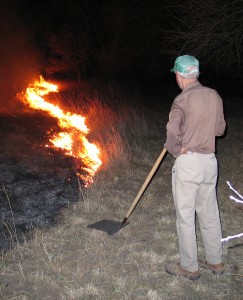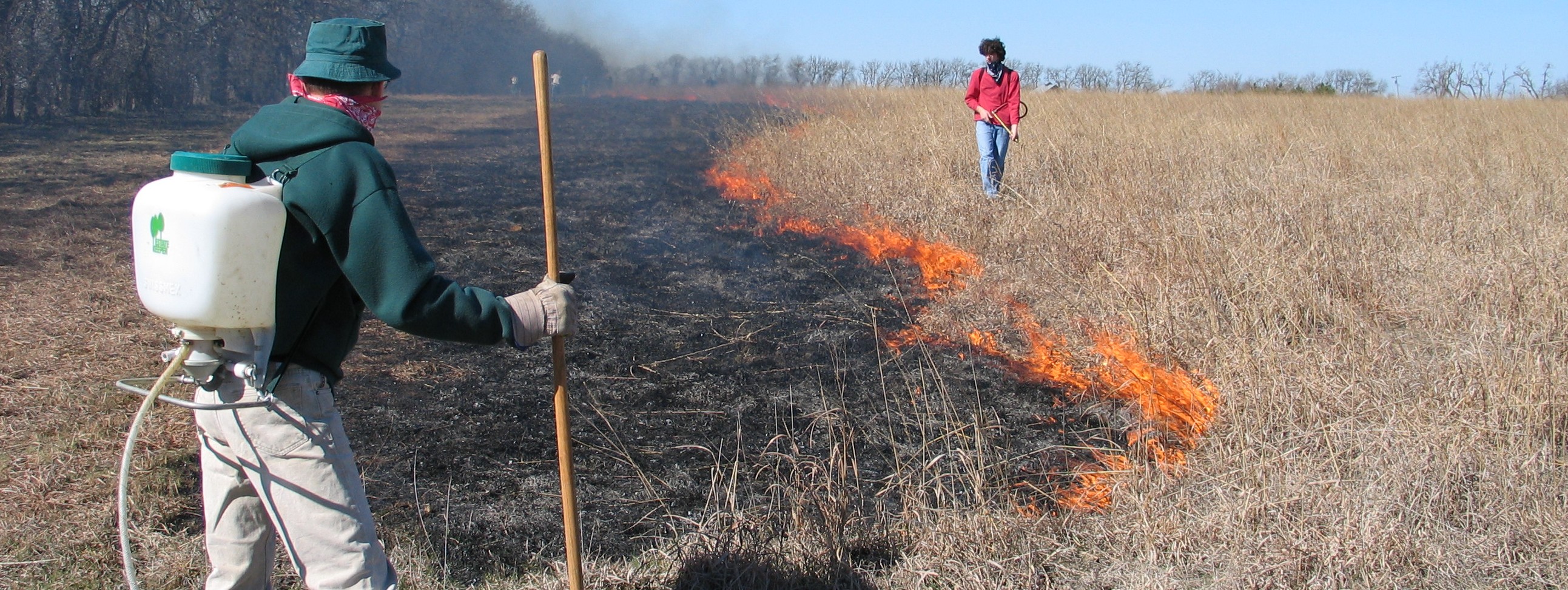Prairies have historically been sustained by the disturbance mechanisms of fire and grazing. Fires set by lightning or Native Americans would burn for long distances before going out and grazers including bison, elk, and deer would feast on the lush green growth that followed. These processes of disturbance kept trees and shrubs from invading the prairie ecosystem where it has dominated the Great Plains landscape for 10,000 years since the last ice age. But times have changed. Due to a highly fragmented landscape, fires now must be prescribed by people and grazers now are mostly represented by area-restricted cattle. Mowers and swathers help simulate both of these activities too. The key now is that people must purposefully implement disturbance regimes of fire and/or cutting in order to resist the invasion of woody plants and restore/maintain prairie plant communities dominated by grasses, sedges, and wildflowers.
From 2004-2010, Dyck Arboretum assisted South Central Kansas prairie landowners in the development of management plans with the aim of conserving prairie habitat and the native wildlife it supports. Whether you own a never-tilled remnant prairie with high species diversity or a less diverse reconstructed prairie that is just getting started, a management plan is helpful in maintaining or restoring the quality of that prairie over time.
A prairie management plan typically has the following elements: 
- A vegetation survey to determine initial habitat quality
- Consultation on how to prepare for a prescribed burn
- A prescribed burning schedule
- Possible local resources to assist with grazing
- Getting you in contact with tree-clearing contractors
- Providing information to manage for specific exotic/invasive species
Prescribed burning usually provides the most cost effective method to control trees and shrubs in your prairie. The best preparation for a spring prescribed burn starts with creating good firebreaks the summer and fall before. Contact Brad Guhr for more information at 620-327-8127.

